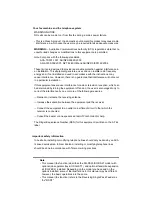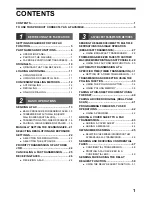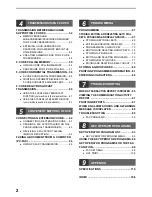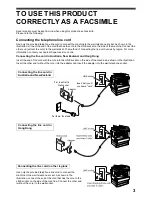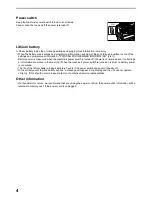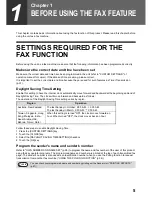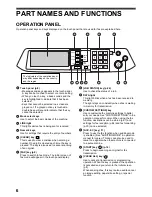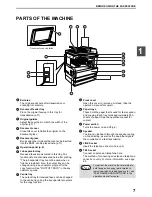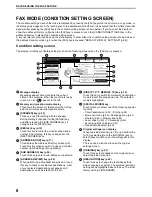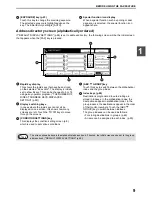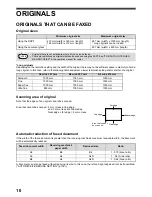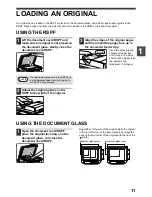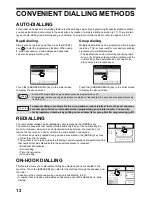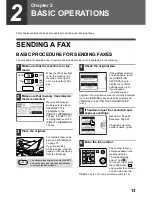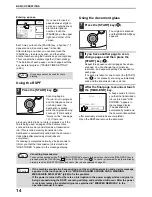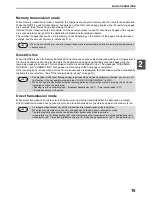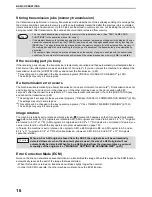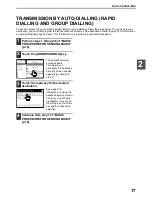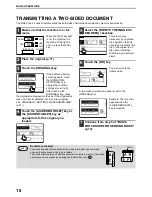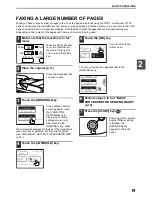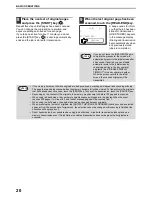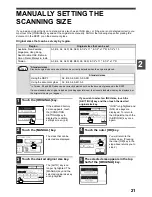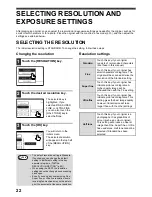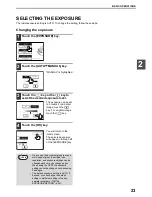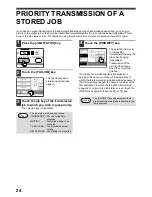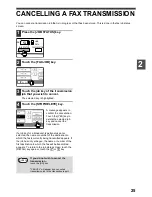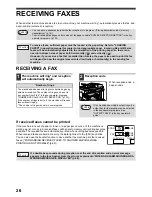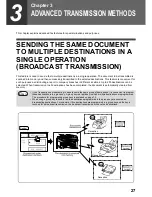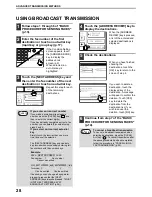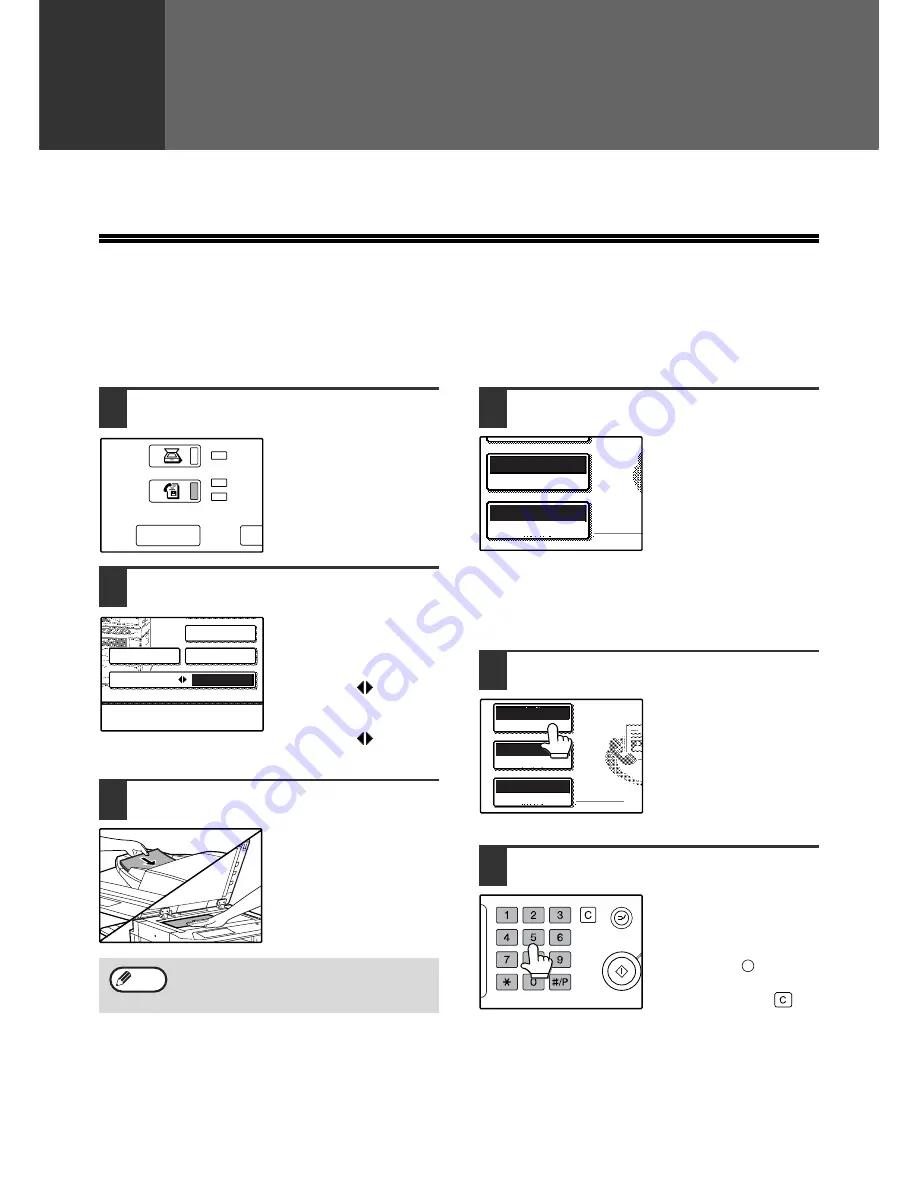
13
2
Chapter 2
BASIC OPERATIONS
This chapter explains the basic procedures for sending and receiving faxes.
SENDING A FAX
BASIC PROCEDURE FOR SENDING FAXES
The procedure for sending a fax in memory transmission mode (p.15) is explained in the following.
1
Make sure that the machine is in fax
mode.
When the [FAX] key light
is on, the machine is in
fax mode. If the light is
not on, press the [FAX]
key.
2
Make sure that memory transmission
mode is selected.
Memory transmission
mode is selected when
"MEMORY TX" is
highlighted in the
[DIRECT TX
MEMORY
TX] key. If "DIRECT TX "
is highlighted, touch the
[DIRECT TX
MEMORY
TX] key.
3
Place the original.
For originals that can be
sent, see "ORIGINALS"
on page 10.
If you are sending
multiple pages, scan the
pages in order beginning
from the first page.
4
Check the original size.
If the address directory
screen appears, touch
the [CONDITION
SETTINGS] key to
display the condition
settings screen (p.8).
If you loaded a
non-standard size
original or the original size was not correctly detected,
touch the [ORIGINAL] key and set the original size.
("MANUALLY SETTING THE SCANNING SIZE"
(p.21))
5
If needed, adjust the resolution and
exposure settings.
Resolution: Page 22
Exposure: Page 23
If needed, select the
sender's name. (p.46)
6
Enter the fax number.
The number that you
entered appears in the
message display
("Condition Setting
screen" (p.8
)).
If it is not correct, press
the [CLEAR] key (
)
and re-enter the number.
You can also use the
REDIAL key (p.12) or an auto-dial number (p.12).
You cannot place originals in both the RSPF
and on the document glass and send them
in a single fax transmission.
SCAN
FAX
DATA
DATA
LINE
JOB STATUS
CUSTOM SE
SUB ADDRESS
ADDRESS REVIEW
SPECIAL MODES
DIRECT TX
MEMORY TX
Note
AUTO A4R
ORIGINAL
STANDARD
RESOLUTION
EXPOSURE
AUTO A4R
ORIGINAL
STANDARD
RESOLUTION
AUTO
EXPOSURE
ACC.#-C
1


